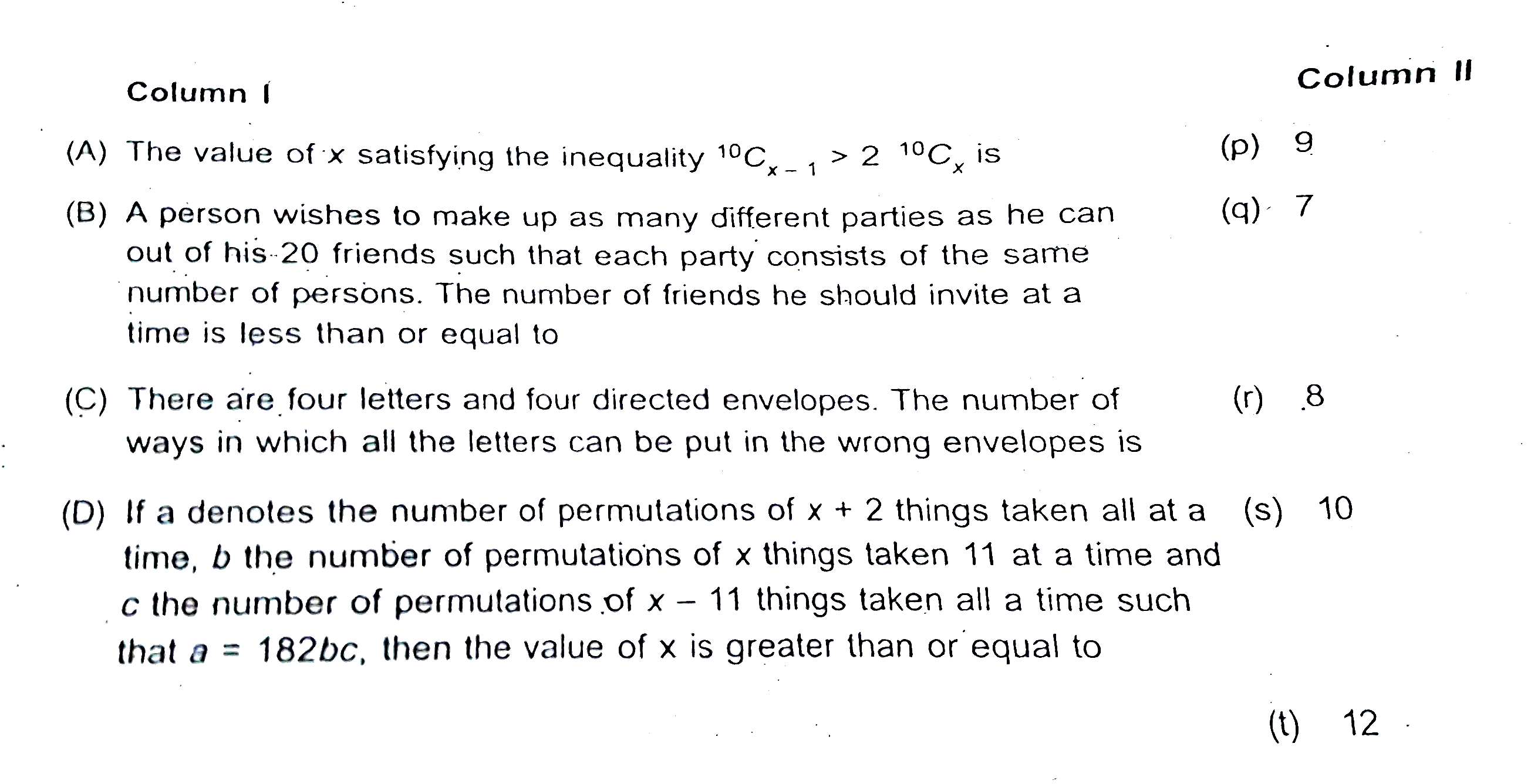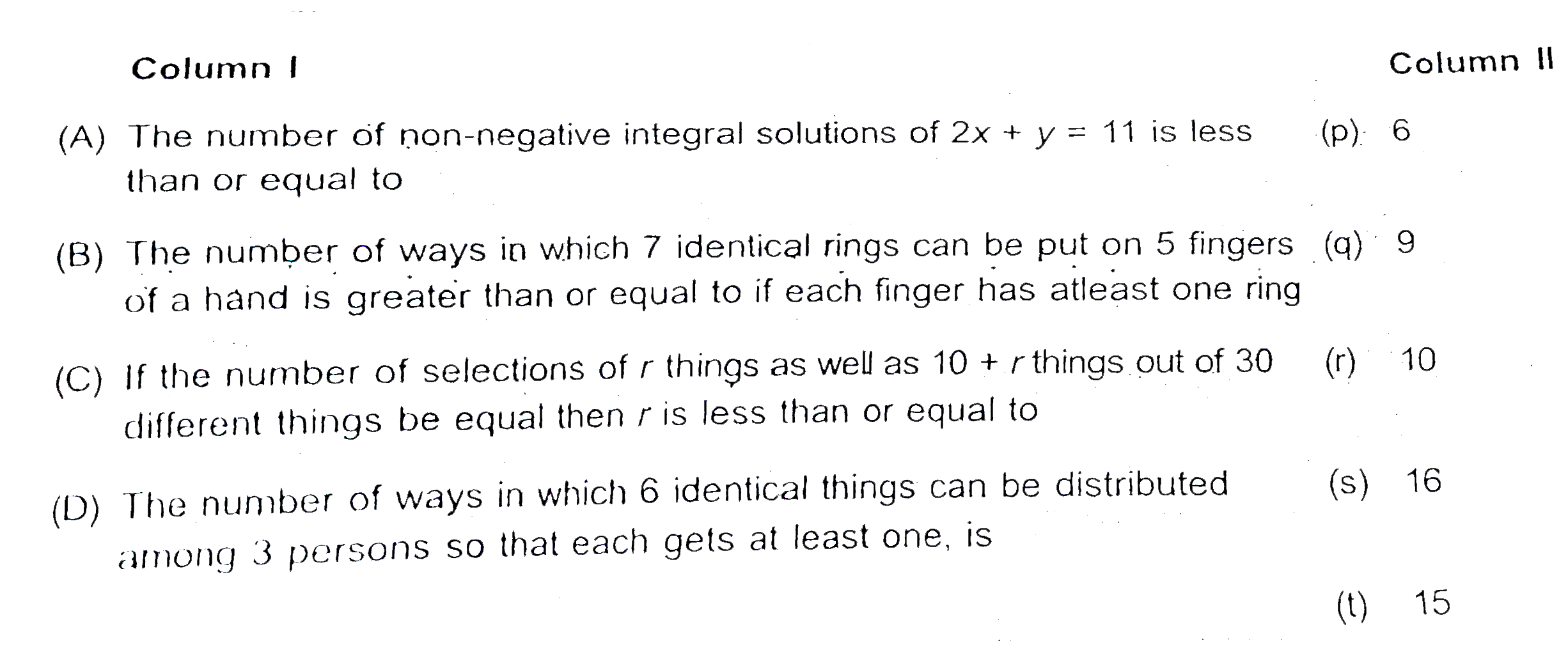The correct match between the entries in column I and column II are :
(a) - (ii), (b) - (i) , (c) - (iv) , d- (iii)
(a) - (i) , (b) - (iii) , C - (iv) ,(d) - (ii)
(a) - (iii) , (b) - (ii) , (c) - (i) ,(d) - (iv)
(a) - (iv) , (b) - (ii) , (c) - (i) , (d) - (iii)
To solve the problem of matching the entries in column I (types of electromagnetic waves) with their corresponding wavelengths in column II, we can follow these steps:
1. Understand the Electromagnetic Spectrum:
- The electromagnetic spectrum is arranged in order of decreasing wavelength (or increasing frequency). The order is as follows:
- Radio waves
- Microwaves
- Infrared waves
- Visible light
- Ultraviolet rays
- X-rays
- Gamma rays
2. Identify the Wavelength Ranges:
- Each type of electromagnetic wave has a specific range of wavelengths:
- Gamma rays: 10−15 meters
- X-rays: 10−10 meters
- Microwaves: 10−3 meters
- AM radio waves: 100 meters
3. Match Each Wave with its Wavelength:
- Now we will match the waves from column I with their corresponding wavelengths from column II:
- Gamma rays: 10−15 meters (smallest wavelength)
- X-rays: 10−10 meters
- Microwaves: 10−3 meters
- AM radio waves: 100 meters (largest wavelength)
4. List the Matches:
- Based on the above information, we can summarize the matches as follows:
- Gamma rays → 10−15 meters (Match with option 2)
- X-rays → 10−10 meters (Match with option 3)
- Microwaves → 10−3 meters (Match with option 4)
- AM radio waves → 100 meters (Match with option 1)
5. Final Matching:
- Therefore, the correct matches are:
- 1. AM radio waves → 100 meters
- 2. Gamma rays → 10−15 meters
- 3. X-rays → 10−10 meters
- 4. Microwaves → 10−3 meters
Final Answer:
The correct matches are:
- 1 → AM radio waves (100 meters)
- 2 → Gamma rays (10−15 meters)
- 3 → X-rays (10−10 meters)
- 4 → Microwaves (10−3 meters)
- The electromagnetic spectrum is arranged in order of decreasing wavelength (or increasing frequency). The order is as follows:
- Radio waves
- Microwaves
- Infrared waves
- Visible light
- Ultraviolet rays
- X-rays
- Gamma rays
- Each type of electromagnetic wave has a specific range of wavelengths:
- Gamma rays: 10−15 meters
- X-rays: 10−10 meters
- Microwaves: 10−3 meters
- AM radio waves: 100 meters
- Now we will match the waves from column I with their corresponding wavelengths from column II:
- Gamma rays: 10−15 meters (smallest wavelength)
- X-rays: 10−10 meters
- Microwaves: 10−3 meters
- AM radio waves: 100 meters (largest wavelength)
- Based on the above information, we can summarize the matches as follows:
- Gamma rays → 10−15 meters (Match with option 2)
- X-rays → 10−10 meters (Match with option 3)
- Microwaves → 10−3 meters (Match with option 4)
- AM radio waves → 100 meters (Match with option 1)
- Therefore, the correct matches are:
- 1. AM radio waves → 100 meters
- 2. Gamma rays → 10−15 meters
- 3. X-rays → 10−10 meters
- 4. Microwaves → 10−3 meters
The correct matches are:
- 1 → AM radio waves (100 meters)
- 2 → Gamma rays (10−15 meters)
- 3 → X-rays (10−10 meters)
- 4 → Microwaves (10−3 meters)
Topper's Solved these Questions
Similar Questions
The correct match between items column I and column II

View SolutionThe correct match between items column I and column II :


View SolutionMatch the entries in column I and column II with same dimensional formula

View SolutionMatch the entry in colum-I with the entry in column-II

View SolutionMatch the entries of Column I with those of Column-II

View SolutionMatch the entries of Column I with those of Column-II

View SolutionMatch all the entries in column-I to all the entries in column-II

View SolutionMatch between column I and column-II and choose the correct answer ?

View SolutionMatch the entries in column II with the statements given in column I.

View SolutionColumn-I and Column-II contains four entries each. Entries of column-I are to be matched with some entries of column-II. Each entry of column-I may have the matching with one or more than one entries of column-II.

View Solution
